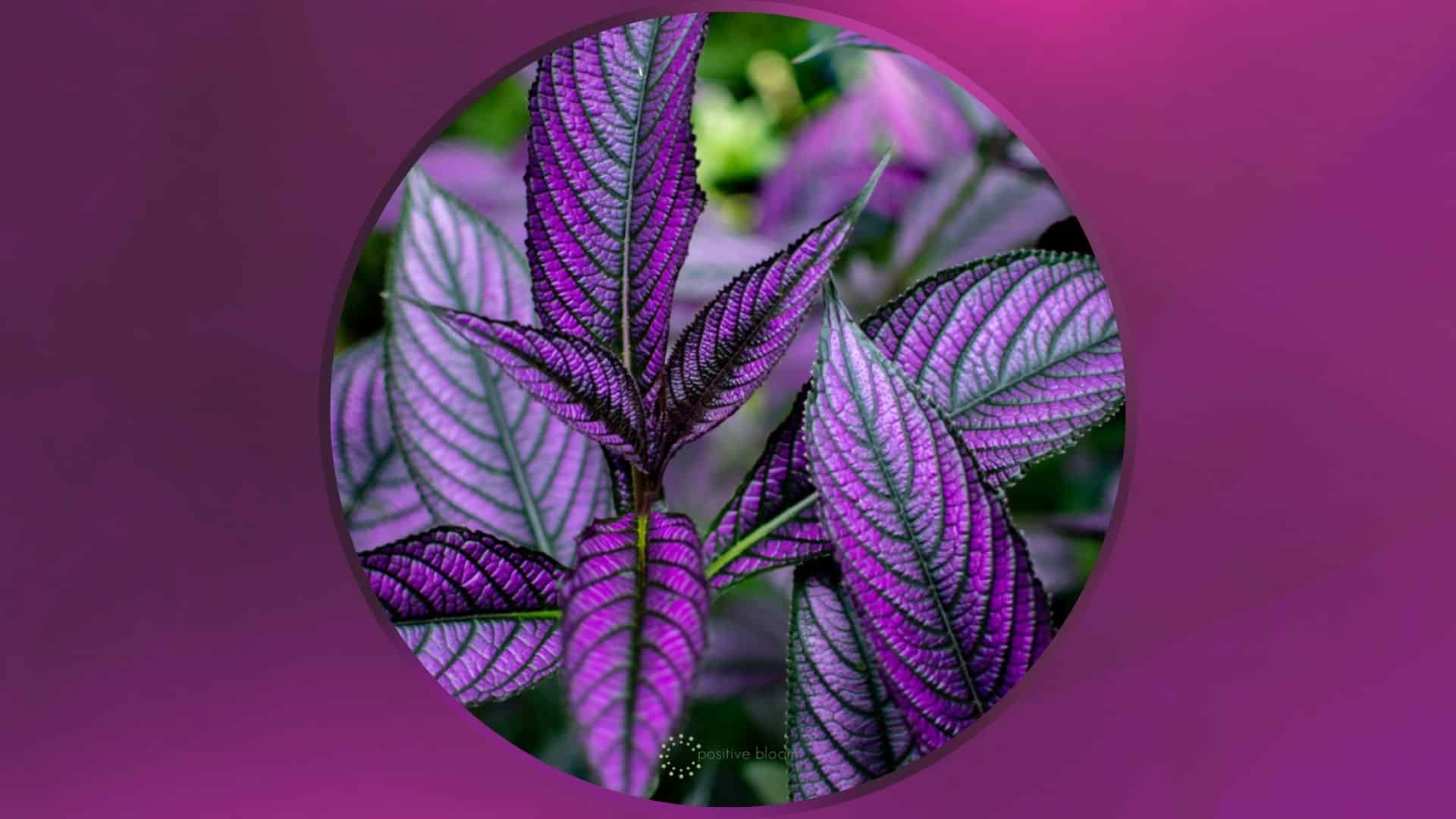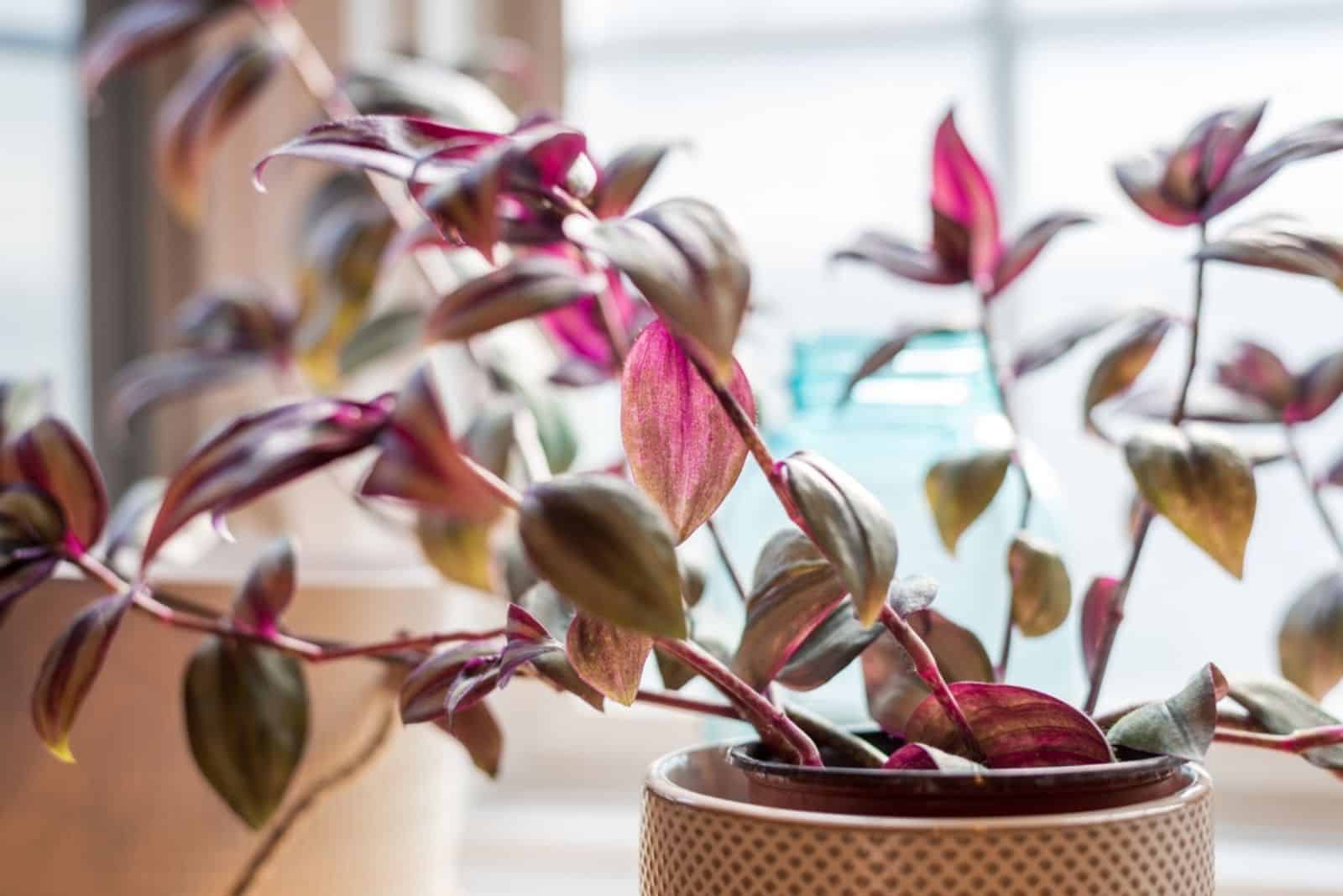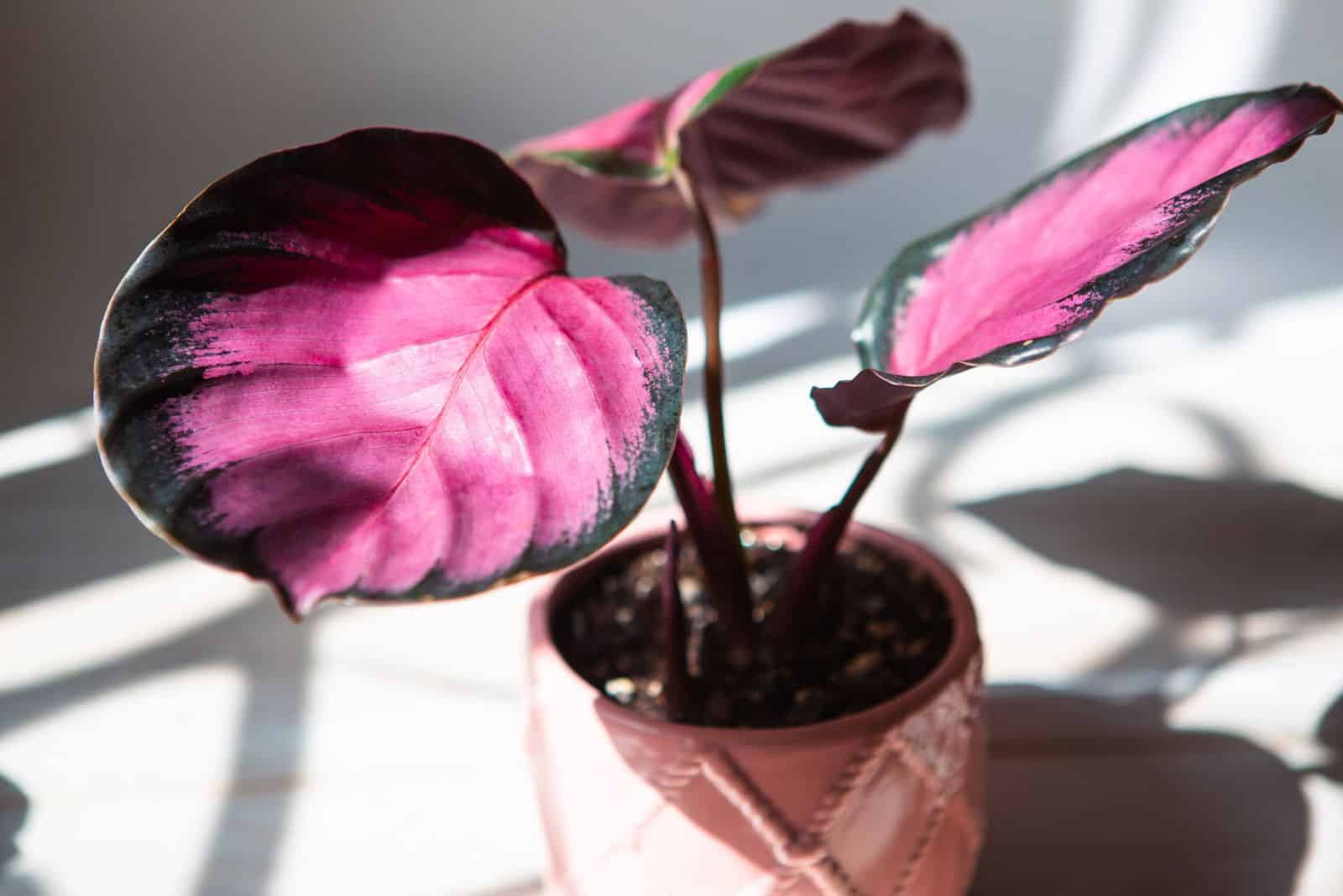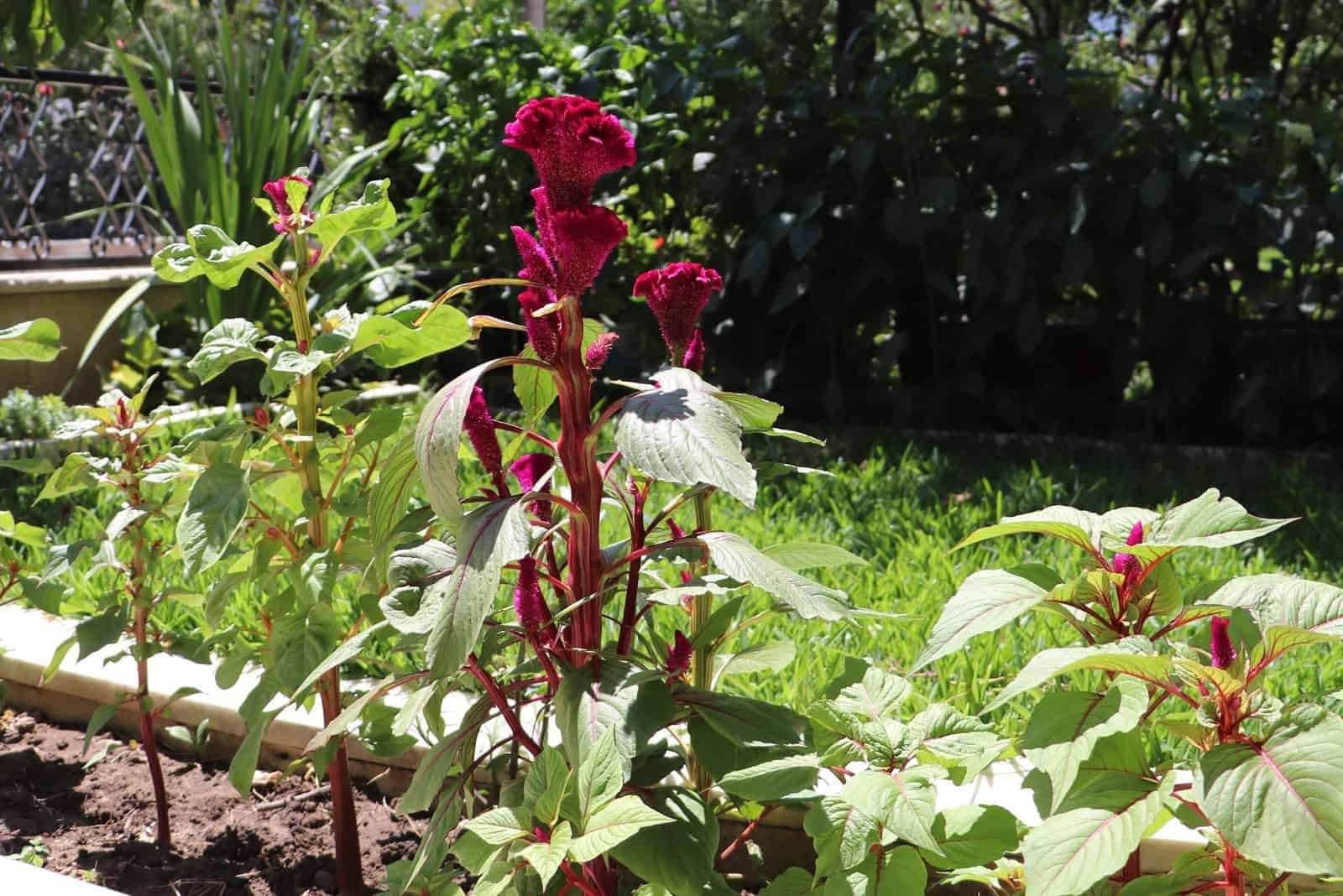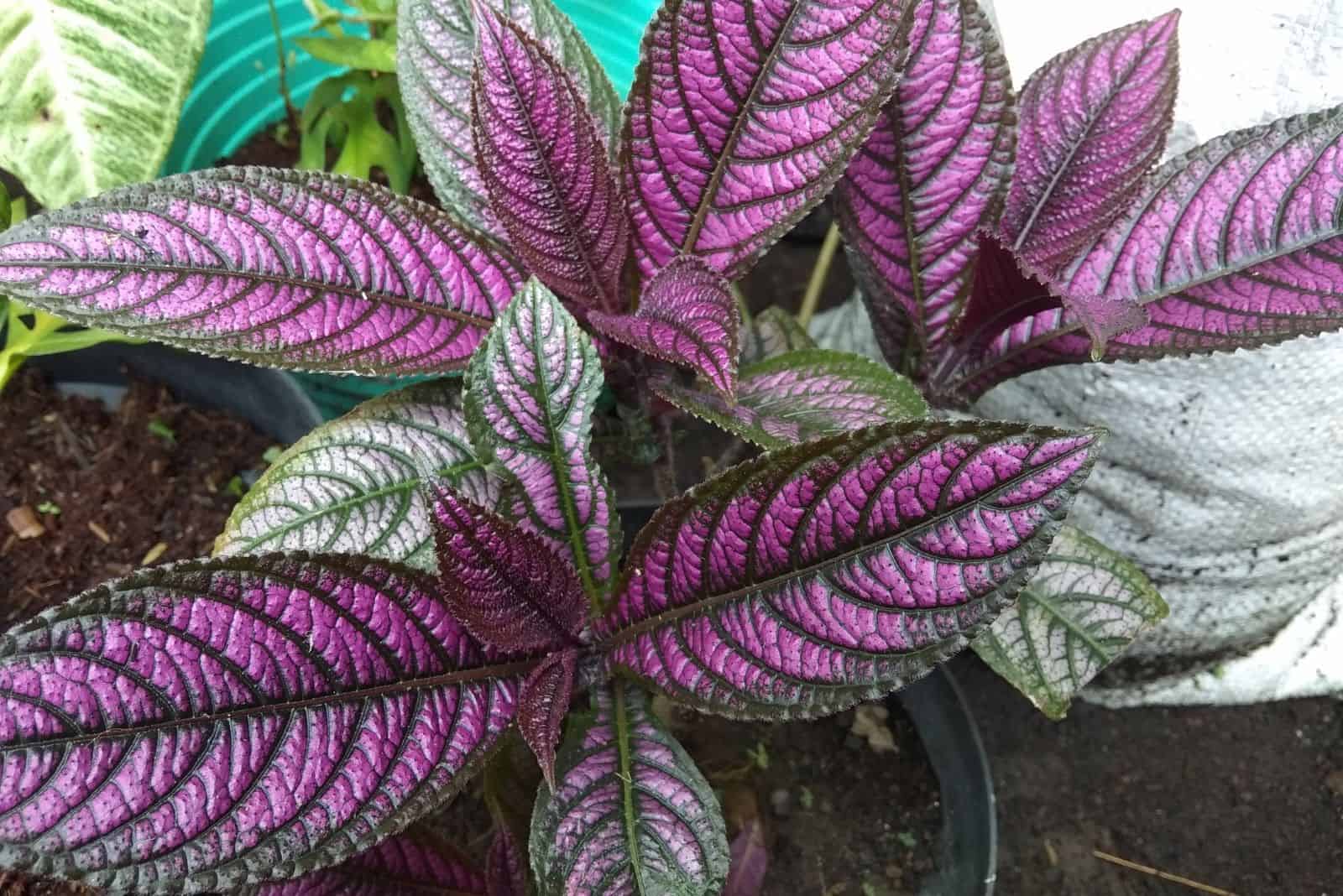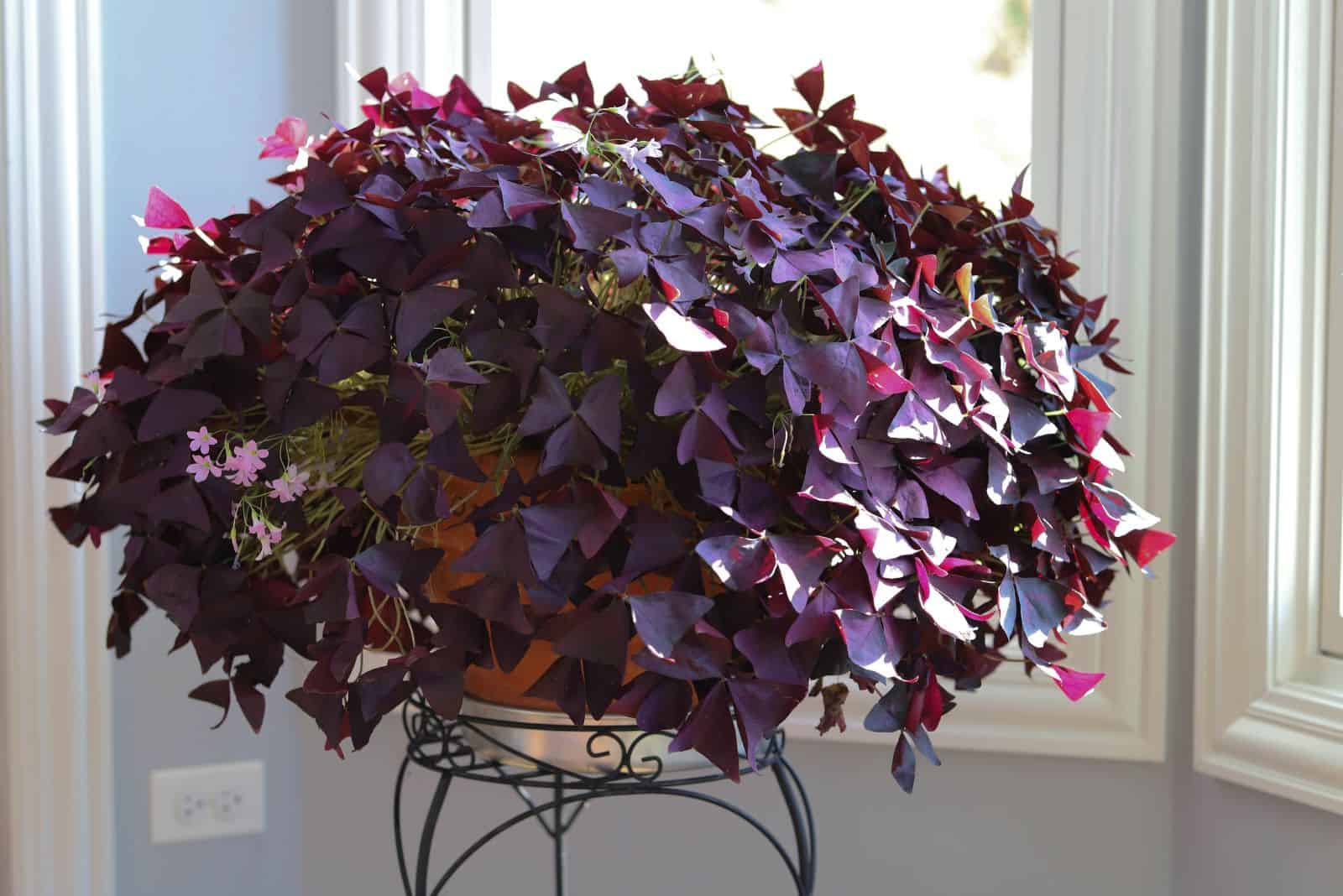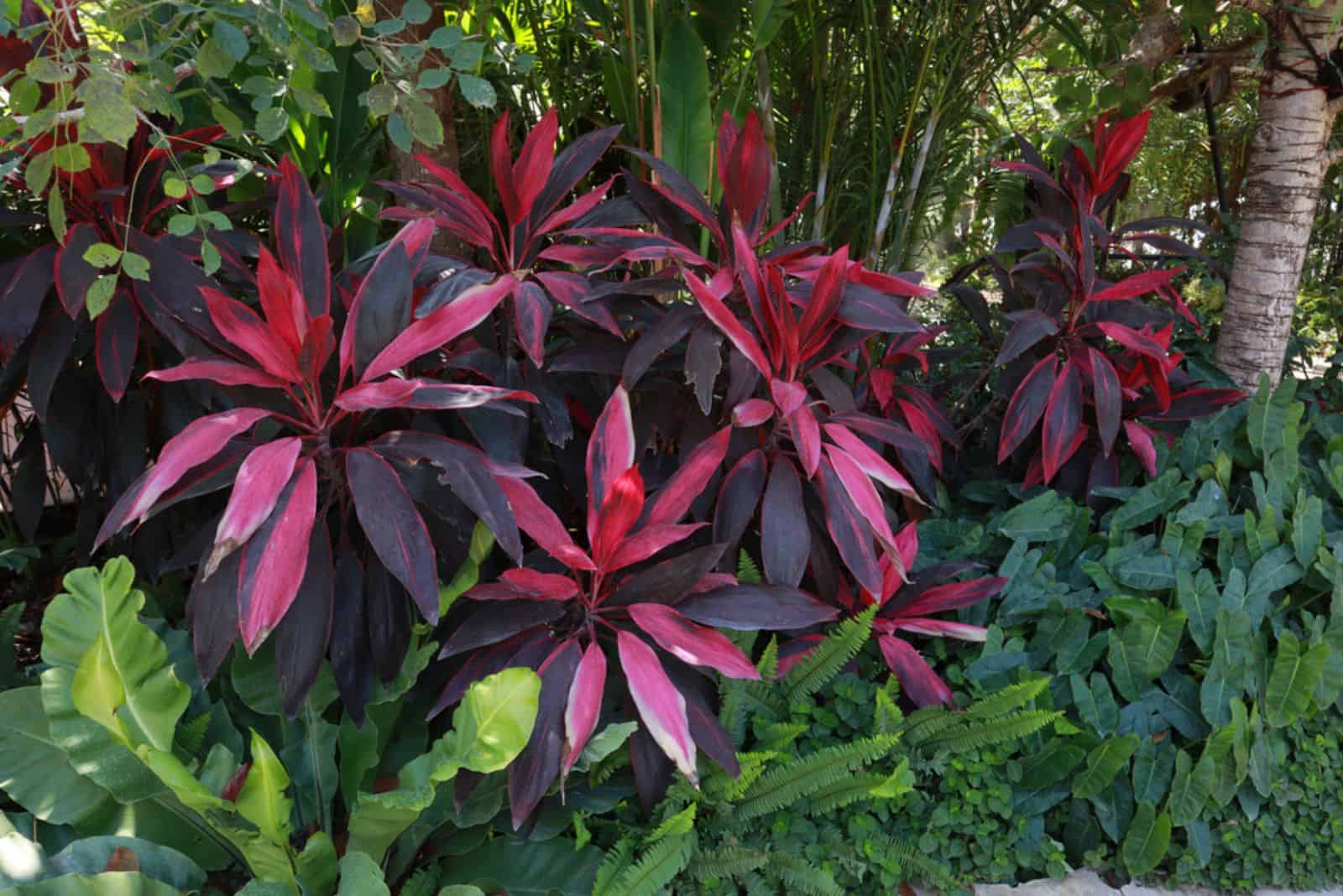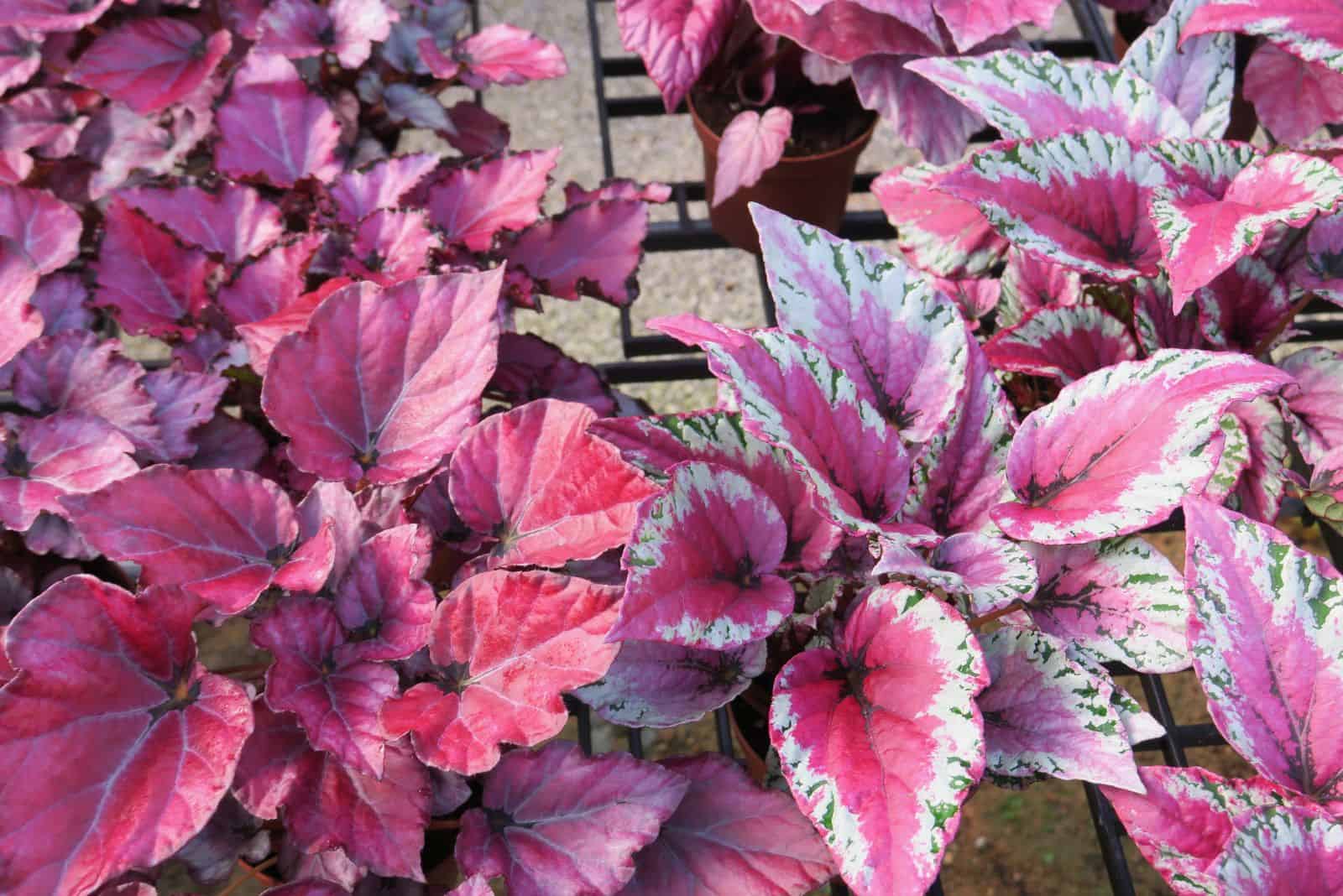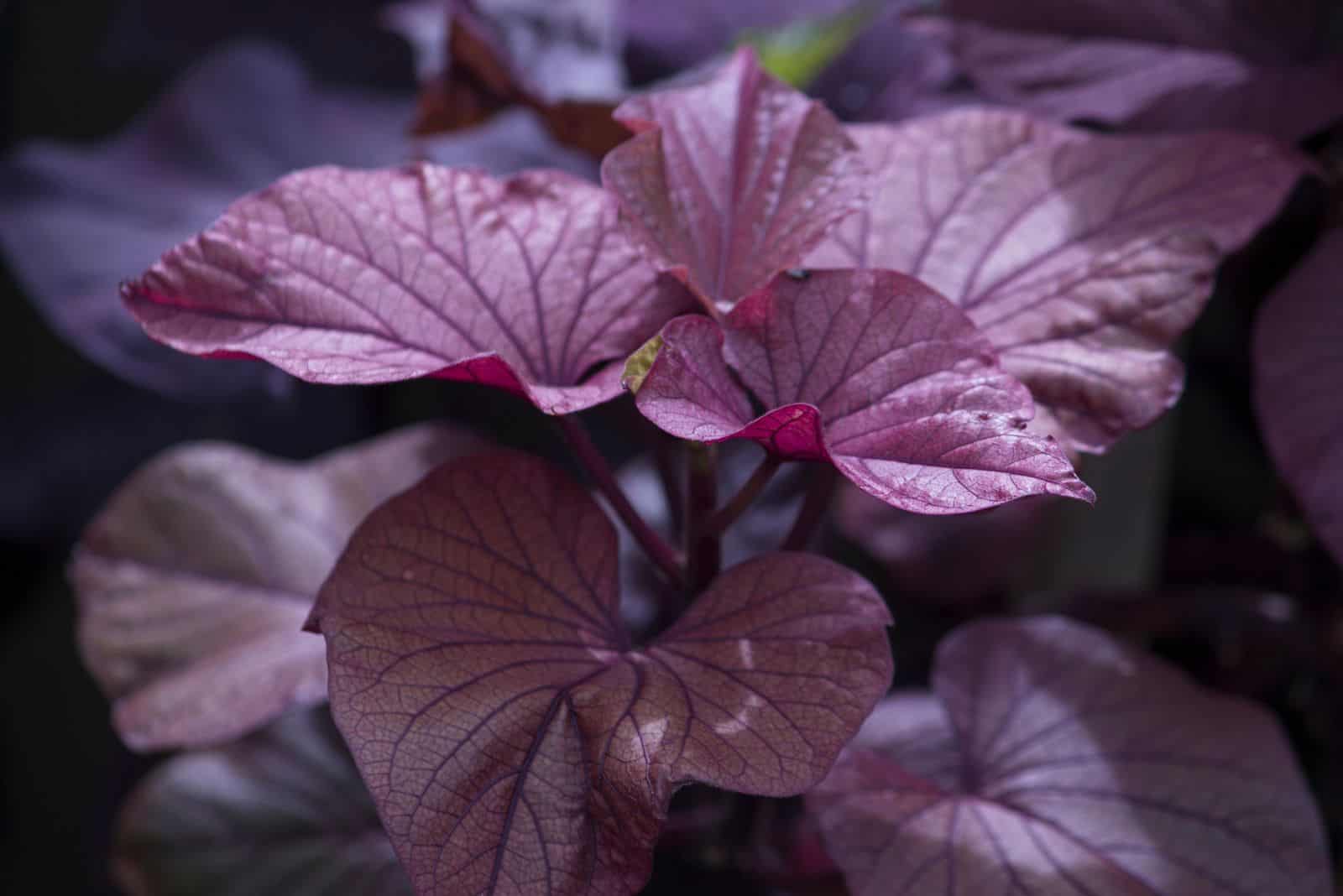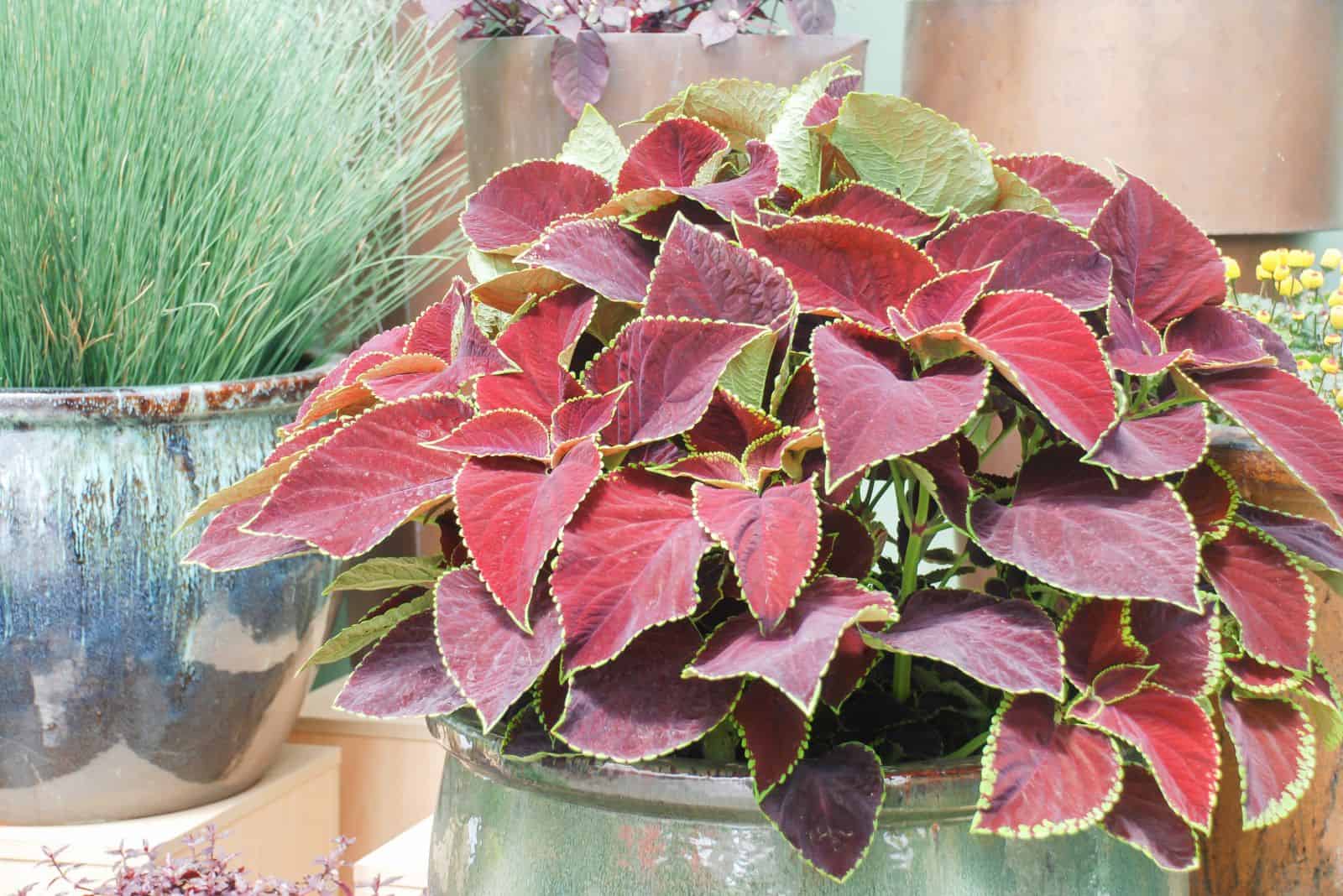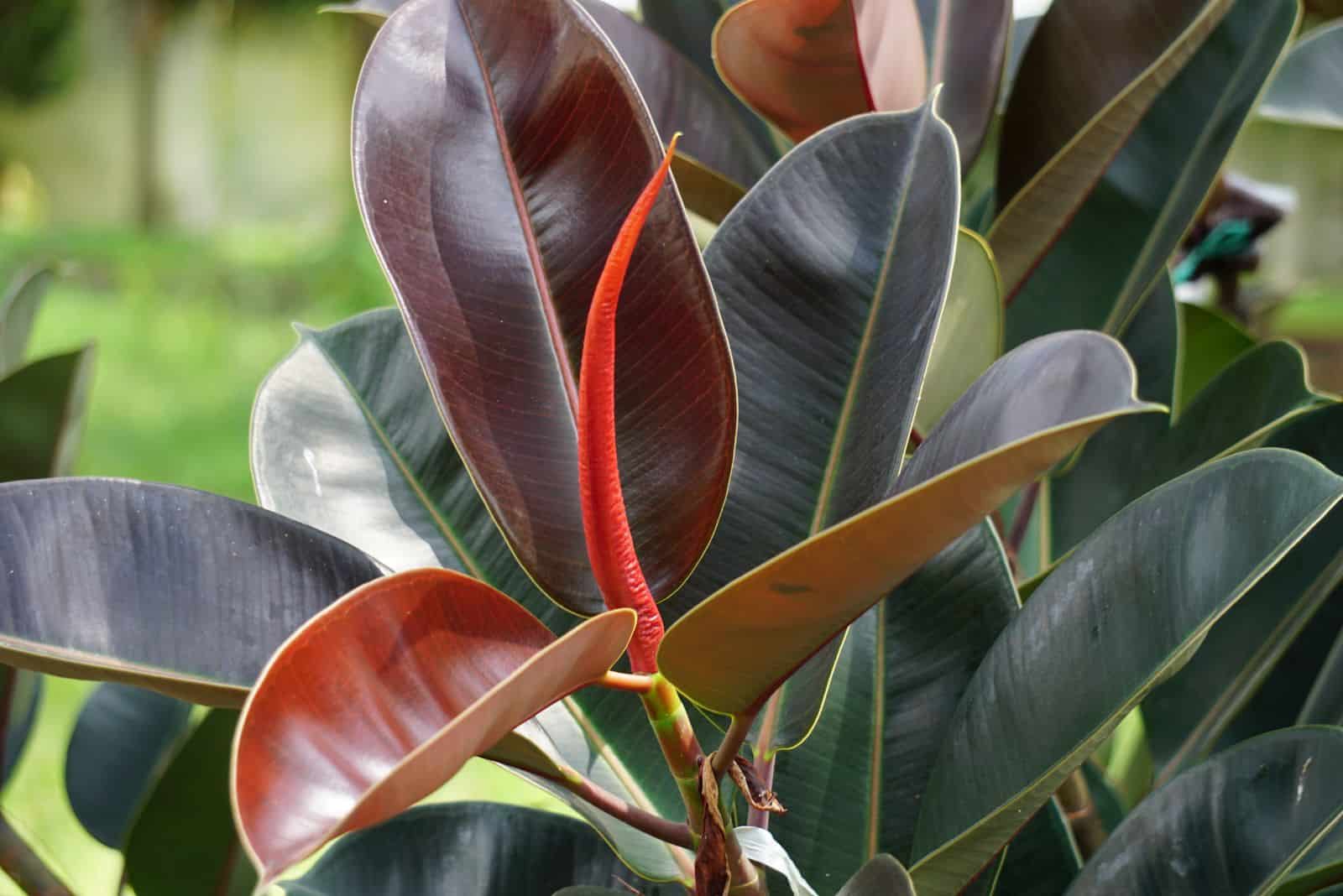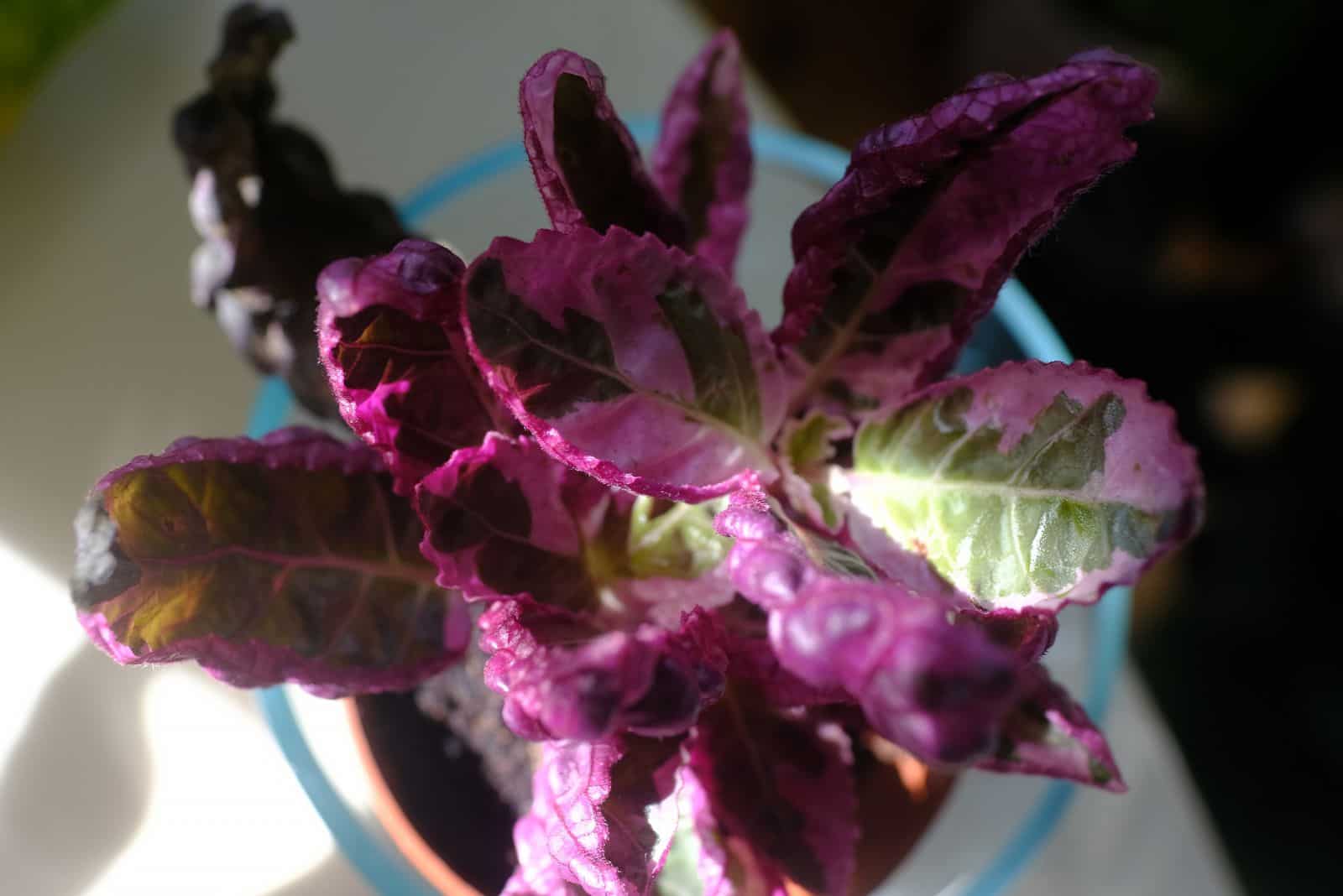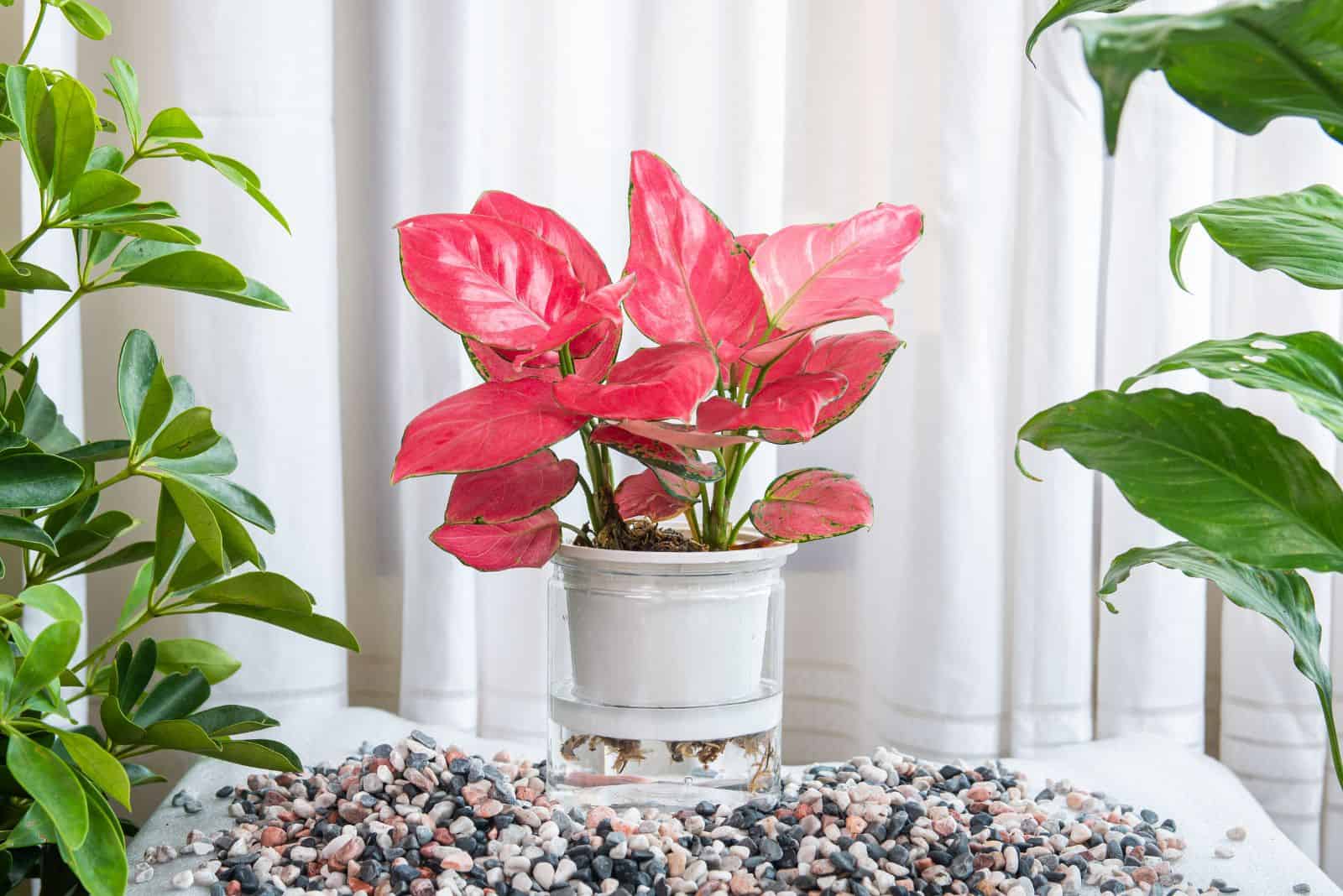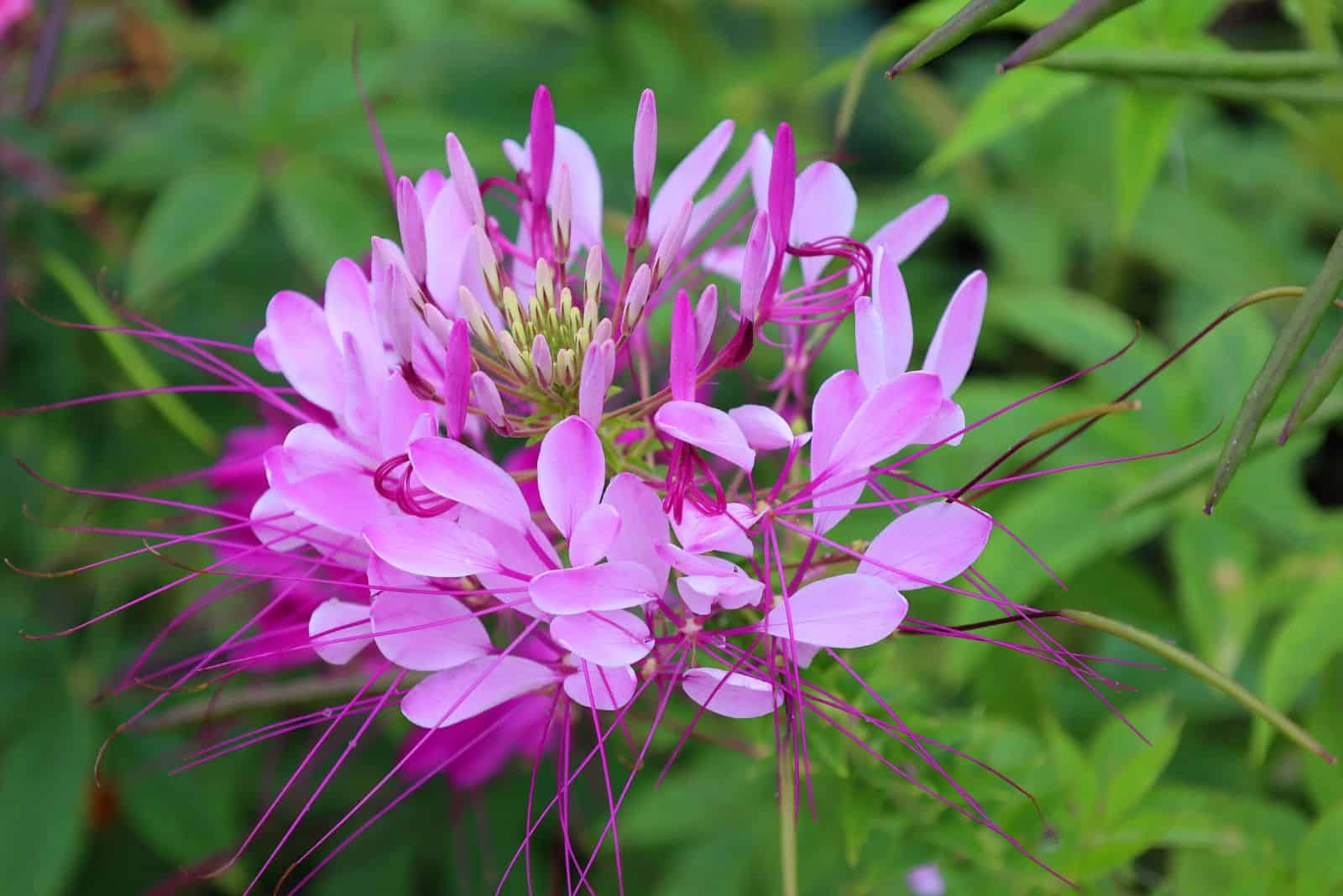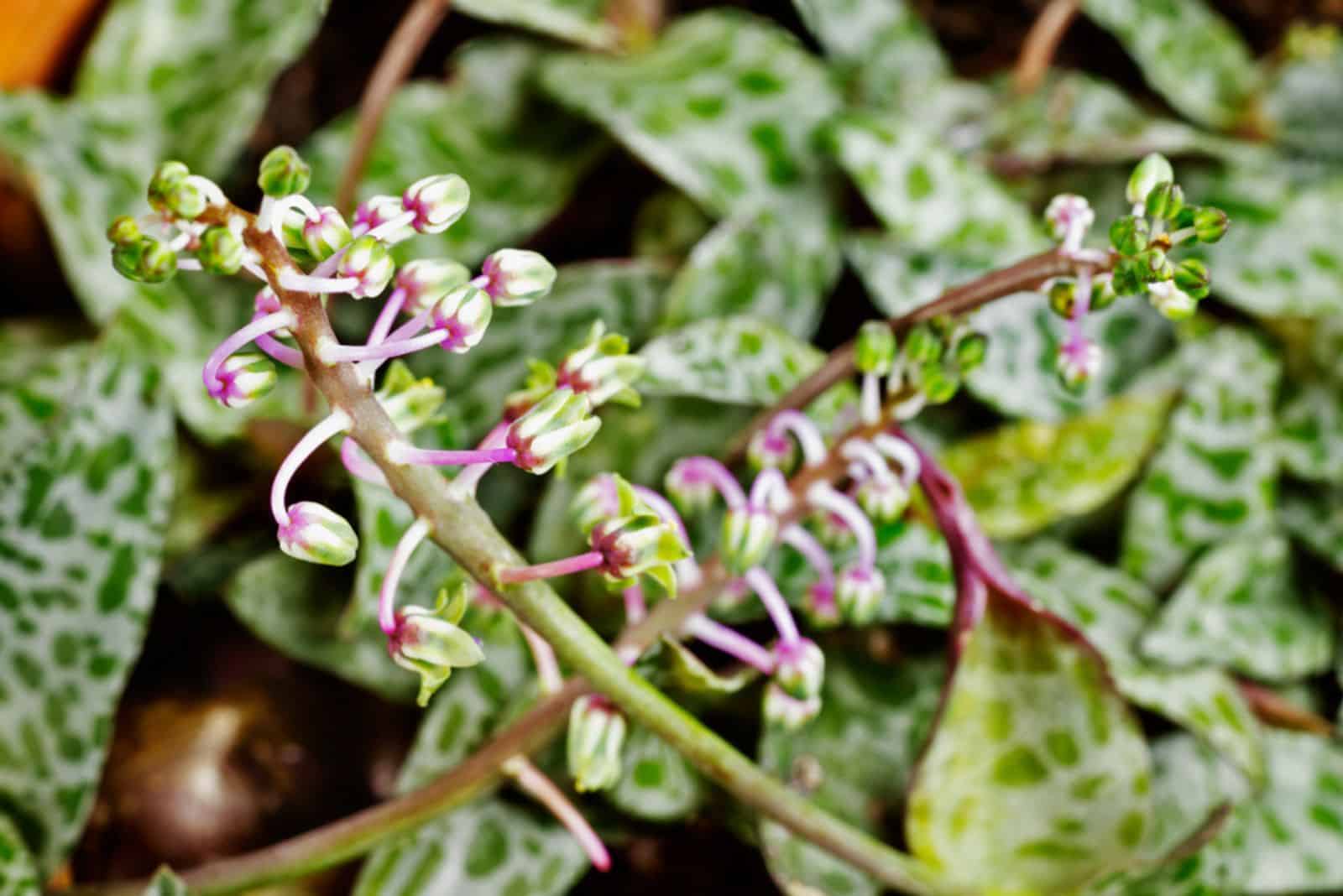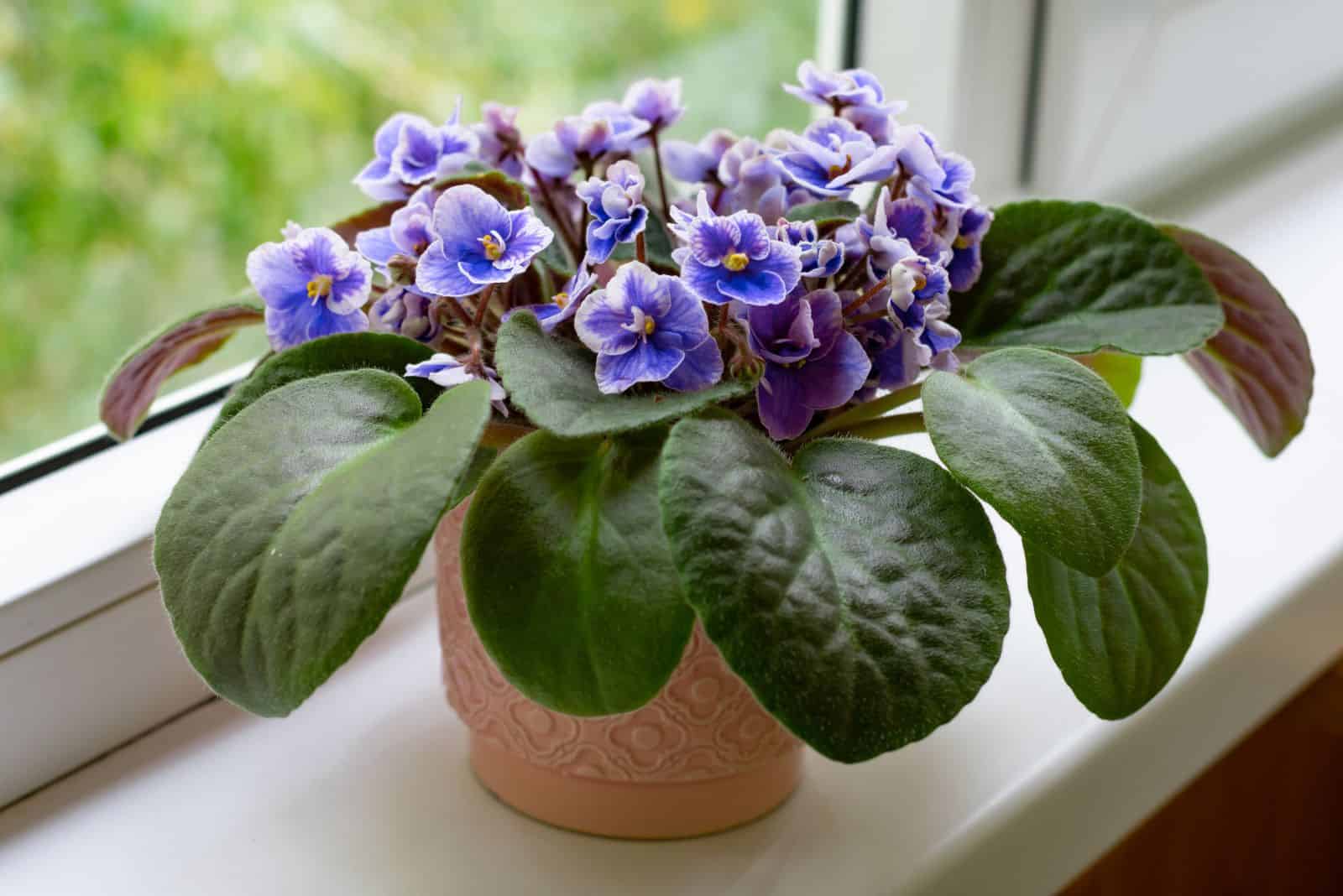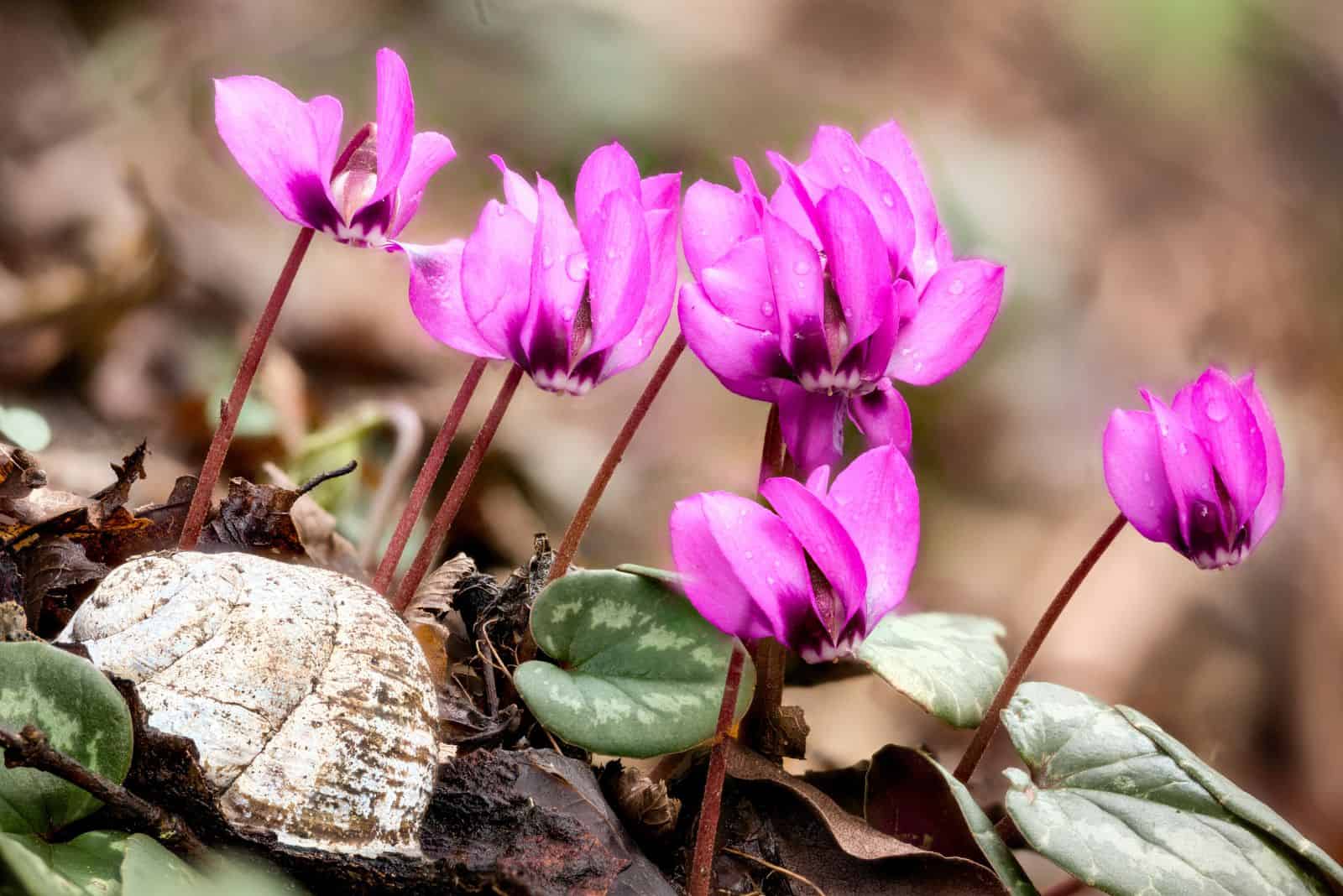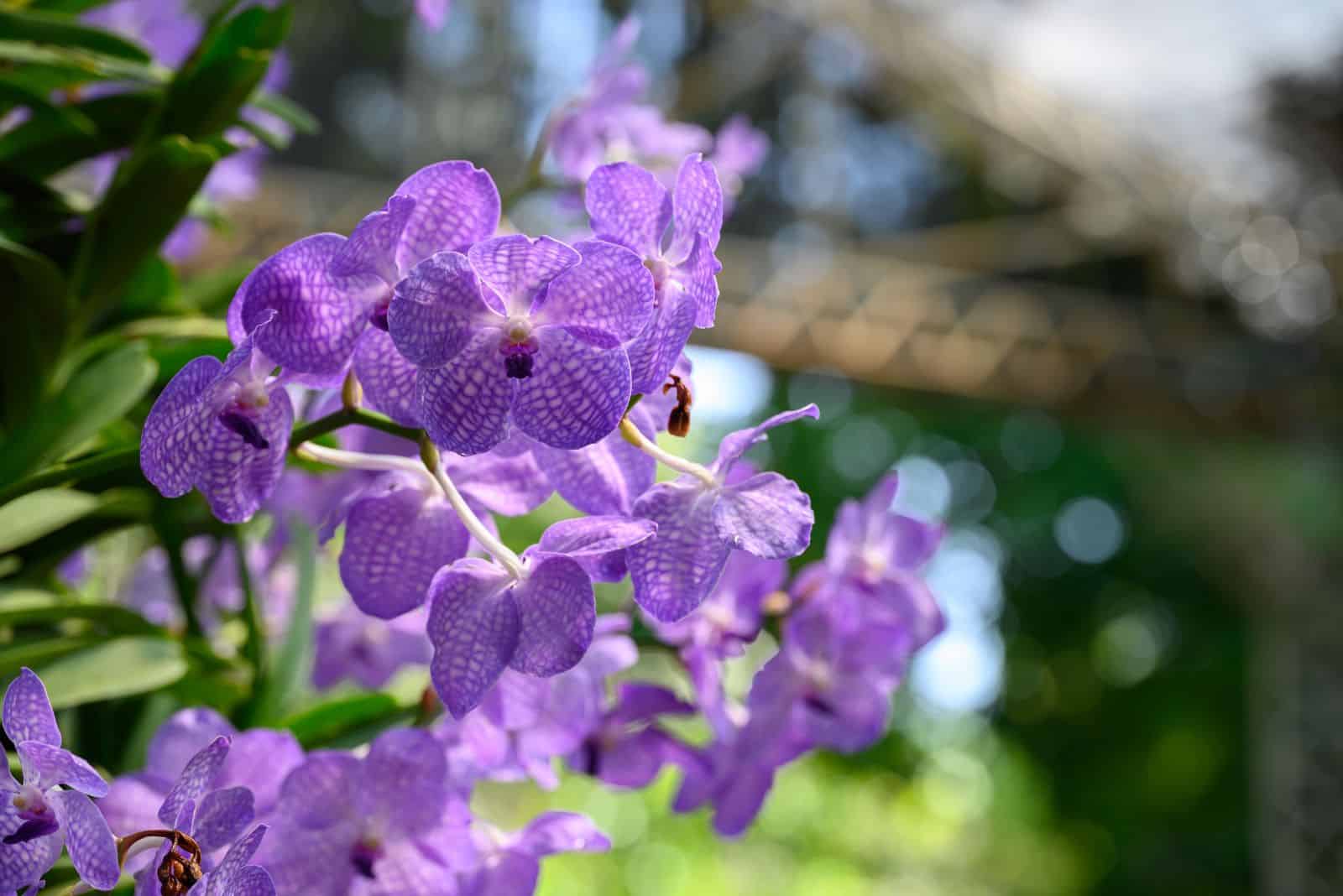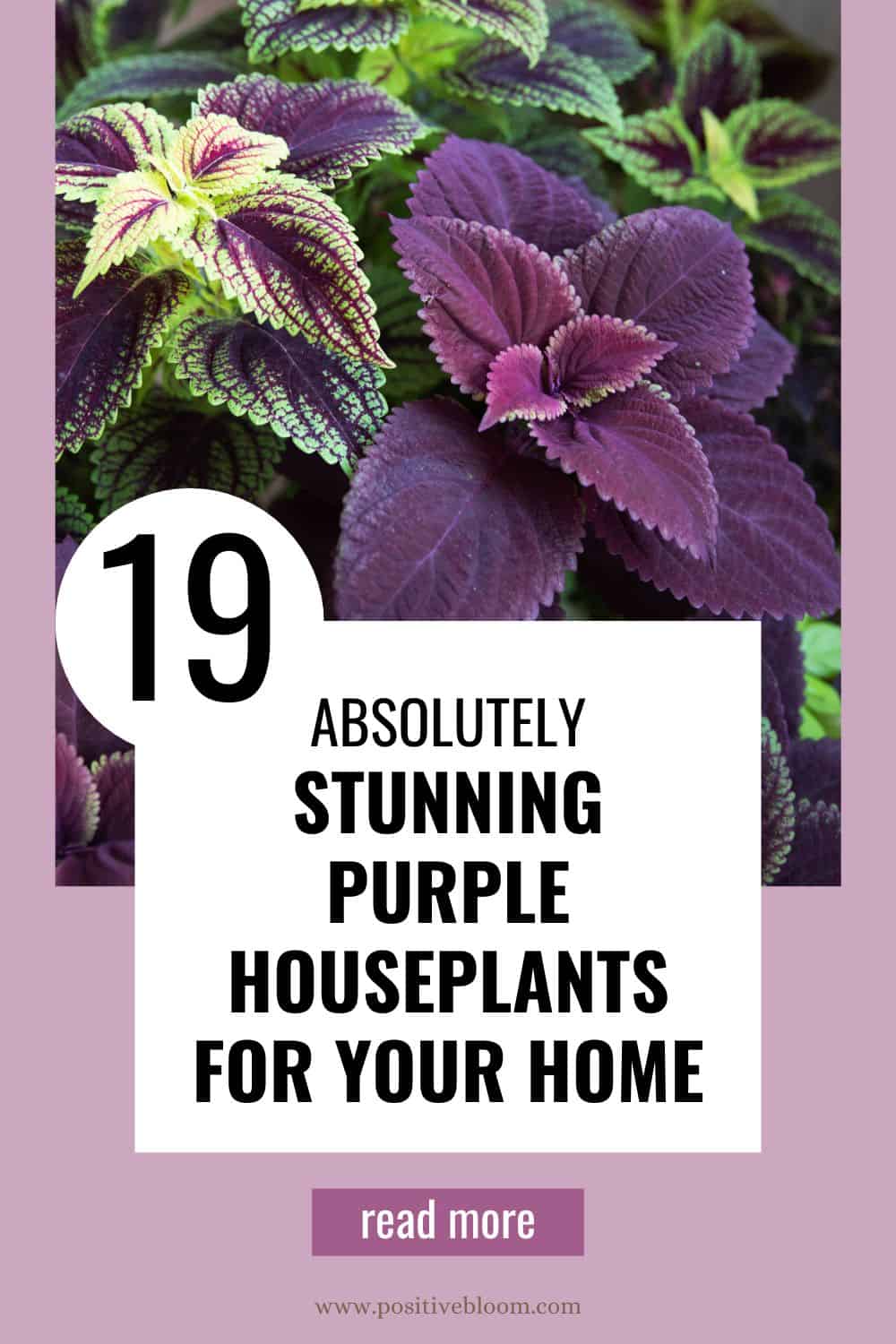If you are trying to spruce up your space and make it look more luxurious, then you should definitely check out these lovely purple houseplants. We don’t see a purple color occur in nature that often, but when it does, it is truly breathtaking!
Dark purple leaves really exude royalty and elegance, while light purple can be used for a subtle pop of color in rooms. There is also variegated purple foliage that’s even more unique.
Most of these plants are also low-maintenance, so you won’t have to worry about spending your time and energy on dealing with various plant issues. Now, let’s add some purple to your life!
The Best Purple Houseplants
These plants come in different shapes and sizes, but most importantly, they come in the color purple. Most of these indoor plants are relatively easy to take care of — all you have to do is find the ideal place to keep them growing and glowing!
So, let’s get started!
1. Wandering Jew (Tradescantia Zebrina)
One of those plants that looks great in any container, whether it’s a normal pot, a hanging basket, or a glass jar with water and LECA, is the Wandering Jew, commonly known as the silver inch plant. It produces lovely and striped pink, purple, or green leaves.
Since this plant is naturally found in Mexico and the Caribbean, it has adapted to the region’s warm climate and abundant sunlight. Since they can tolerate some direct sunshine throughout the day, growing them close to a west-facing window shouldn’t be a problem.
These plants begin to lose their striking colors and leaf stripes if they don’t get enough light. The most famous variety is the Wandering Jew ‘Red’, which is one of the prettiest plants that produce red leaves.
2. Calathea Roseopicta
One of the most attractive houseplants is the Calathea roseopicta, which is native to the South American rainforests.
The name rose-painted Calathea is definitely more appropriate; if you’re looking for a plant with large, pink leaves, this Calathea is the one for you.
Another great feature about the Roseopicta Calathea is that it is a member of the family of prayer-plants. These plants really fold up at night, giving the impression that they are praying. The magnificent, broad, dark green leaves of this Calathea plant are stunning.
This Calathea with rose-painted leaves has reddish-purple undersides. Your Calathea will fold up at dusk like all other prayer plants; its dark green and reddish purple hues will meld together and it will turn maroon. This looks truly remarkable!
Calathea roseopicta care requirements include direct bright light, high humidity, porous soil with good drainage, warm temperatures, watering when the top two inches of soil get dry, and monthly fertilization.
3. Purple Passion Plant (Gynura Aurantiaca)
This exotic annual plant produces purple velvet leaves that are absolutely dreamy. They are dark green and outlined with a beautiful purple color. These leaves are also covered with tiny hairs, which makes them velvety to the touch.
When young, this distinctive plant grows upright, but as it becomes older, it spreads out like a vine.
Taking care of the velvet plant is relatively easy — all you have to do is put it in a well-draining potting mix, make sure it receives plenty of bright indirect light, and water it occasionally.
4. Persian Shield Plant (Strobilanthes Dyeriana)
Due to its unique fluorescent purple reflective thylakoids, this plant’s leaves look like they are glowing for real! Their crystal-like structure scatters light to create a glitter that looks absolutely gorgeous against the dark green background.
This houseplant is definitely one of the prettiest on our list.
When it comes to plant care, it is relatively easy to take care of. This beauty originates from Myanmar, so it is used to growing in a warm and humid environment. You can grow this plant both indoors and outdoors, either in full or partial sun.
They will also need slightly acidic soil and water once the top few inches of the soil dry out. During the growing season, don’t forget to fertilize every two weeks with a half-strength fertilizer.
Under optimal growing conditions, this plant can vigorously grow and reach about 4 feet long.
5. Purple Shamrock (Oxalis Triangularis)
One of the most attractive additions to modern, predominately white interior design is the purple or faux shamrock.
Its pinwheel, deep purple leaves will provide some color to your home, and it can also show small white or light pink blooms.
Originally found in Brazil in South America, it has adapted to growing indoors. It looks fantastic in ordinary pots or hanging baskets, and only needs a little early sun to develop its captivating tint.
Water the plant once the topsoil dries completely, and put it in a loamy or sandy and well-draining soil. During the growing season, you can fertilize your purple shamrock with a liquid houseplant fertilizer.
You can also switch to slow-release fertilizer and follow the instructions on the back if you want it to enrich your landscape.
6. Ti Plant (Cordyline Fruticosa)
The Ti Plant is a typical indoor plant that comes in a lot of red-colored varieties.
The tint of the red lanceolate leaves will depend on how much sunlight there is. The tall, rosette-shaped leaves feature scarlet crowns. Amazingly, this plant’s new growth features a range of pink hues.
The Ti plant has gorgeous variegated leaves that will gradually begin to lose color if they don’t get enough light during the day. The leaves will turn totally green if you keep them in dim light.
They appreciate the heat even on hot summer days, although they do require a few hours of direct sunshine each day, so it’s ideal to keep them on a west-facing windowsill.
7. Begonia spp
Begonias are flowering plants that provide beautiful, vibrant flowers. Both indoor and outdoor cultivation are relatively simple. They require a pH of between 5.5 and 6.5 in order to adequately absorb nutrients from the soil.
This plant also requires proper drainage because it is vulnerable to root rot. To allow any extra water to drain away, always include perlite, peat moss, and vermiculite in the potting soil.
It grows well in all kinds of lighting, including natural light shade and full sunlight, and blooms most lavishly and gracefully in the morning and in the afternoon shade. Since they cannot tolerate direct sun, it is ideal to grow them close to a window that faces north.
The Rex Begonia features stunning dark red flowers that can make any place look more lively. This plant is native to Southeast Asia but can grow perfectly fine indoors. In addition to the Begonia Rex, you can also get a Begonia Masoniana (also known as Iron cross begonia). This plant features dark purple-brownish cross-like variegations on light green leaves.
8. Potato Vine Plant (Ipomoea Batatas)
The Potato vine plant, also known as the Ipomoea batatas, produces delicious and sweet potatoes along with colorful and bushy foliage. Different varieties come in different colors, including copper, lime, black, purple, or bronze.
If you are after the purple one, then you should look for Ipomoea batatas ‘Sweet Caroline Sweetheart Purple’.
Due to its long vines, it can be grown as a hanging plant, and you’ll have long vines and purple leaves swaying around the room. Even though this plant is drought-tolerant, you should still keep the soil moist so that its leaves don’t dry up.
Other than that, keep them in partial sun or shade, and water them when the soil dries out.
9. Purple Heart Plant (Tradescantia pallida)
The Purple heart plant, also known as the Tradescantia pallida ‘Purpurea’, is all about purple — this plant’s stems and leaves have an entirely purple color, which is a very rare occurrence in nature.
It is an evergreen perennial plant that produces narrow purple-green leaves attached to purple succulent stems. It originates from Mexico, which is why the plant requires warm and humid conditions.
You will have to be careful about watering when the plant is young, but once it has matured, the Purple heart plant becomes drought-tolerant, so you won’t have to worry about watering. The purple heart can produce clusters of tiny flowers that range in color from violet to pink when given the proper care, and this includes keeping them in bright indirect sunlight.
If you keep them in low light conditions for too long, the leaves will appear greener.
10. Coleus Plant
These vibrant plants are a wonderful complement to any patio and garden, and I’m sure you could find a spot or two indoors where they would look really amazing.
This plant looks great in any home thanks to its vibrant yellow-green, bright purple, or almost-black leaves, and planting it in a glass container or mason jar further enhances its beauty.
Placing the container on an east-facing windowsill will allow it to enjoy the moderate morning sun while shielded from the intense afternoon light and heat.
Don’t expose this plant to too much or too little sunshine because it can weaken it and cause its leaves to turn pale. This plant is prized for its amazing foliage, so you have to take good care of it!
11. The Rubber Plant (Ficus Elastica)
Although the dark green, succulent-like foliage of the rubber plant (Ficus elastica) is its most distinctive trait, the burgundy and variegated rubber tree varieties are truly one-of-a-kind. Creamy, purple, yellow, or white color splashes stand out a lot!
Plant it in high-quality soil that is well-draining and aerated, and fertilize it once a month with all-purpose liquid fertilizer or every three to six months with slow-release plant food, depending on the fertilizer.
This ficus will grow in bright or low light conditions as long as it is protected from the glaring afternoon sun. When the soil dries, water the plant and maintain a humidity of 40% to 50%.
12. Purple Waffle Plant (Hemigraphis Alternata)
Also known as Red Ivy, the Purple Waffle plant is a perennial plant that originates from tropical regions of Indonesia. It produces purple metallic and crinkled leaves.
Due to its small size, it would look lovely as a centerpiece of a table or on a small shelf against a white background.
These plants are also relatively easy to take care of — all you have to do is ensure that they receive enough sunlight, provide them with acidic and moist soil, and water regularly.
13. Aglaonema (Chinese Evergreen)
The Chinese Evergreen plant is loved by many plant enthusiasts. There are over 20 different varieties that come in different colors, including red, purple, or silver leaves. However, if your goal is to add more purple to your room, then I would recommend you get the Aglaonema rotundum.
It produces dark-green leaves with lovely purple veins all over the surface.
These plants may tolerate some drought conditions and grow in low light and dry air as well (really uncommon for such a pretty plant!).
In the event that the humidity is really low, water this plant at least once a week. Although it can survive in dry air, a humid atmosphere is preferable for it to thrive in. Your aglaonema will grow without fertilizer, but you can speed up the process by using only half as much fertilizer.
14. Purple Spider Plant (Chlorophytum Comosum)
One variety of Spider plant that grows quickly and requires little maintenance is the Purple Spider Plant, commonly known as Violet Queen or Cleome hassleriana.
They were originally grown in South Africa’s tropical rainforests, and today people frequently grow them indoors.
These quick-growing, low-maintenance plants often have long, palmate-shaped green leaves and tiny white flowers. In addition to having a wonderful fragrance, this houseplant also develops a stunning shade of violet, making it an ideal choice for décor.
NASA also published studies demonstrating that spider plants can truly remove toxic pollutants from the air, and at the same time, improve indoor air quality.
These tropical plants like to have their soil moist, which is why they require regular watering. When it comes to light conditions, they thrive in bright indirect sunlight, though they can also grow in low-light conditions.
15. Silver Squill (Ledebouria Socialis)
Even though this plant is called the Silver squill, it still produces lovely purple stems that are great for that subtle pop of purple color in the room. This is a small plant that originates from South Africa.
Silver squill plants produce green leaves that are covered in silver polka dots, though you might spot some purple ones as well!
This is a succulent, so it means that it is relatively drought-tolerant. It stores water in the bulb, so you won’t have to worry about watering them as frequently. I would recommend you water them only when the topsoil dries out.
They also like well-draining soil and bright indirect light.
16. African Violet Plant (Saintpaulia Ionantha)
The African violet plant produces lovely purple flowers that can effortlessly embellish any living space or garden.
You should water this plant whenever the soil dries out, whether you’re growing it in a standard pot or a hanging planter. However, there are a few things you can do to support the growth of this indoor plant if you have chosen to utilize a self-watering pot.
These plants do best on window sills that face east and receive lots of sunlight. They prefer slightly acidic, well-draining soils with a pH range of 5.8 to 6.5. Feed them once a month or once every six weeks with diluted 14-12-14 fertilizer.
A ceramic or terracotta container is a good choice because they don’t retain a lot of moisture. Additionally, avoid placing young plants in self-watering containers with weaker root systems because they won’t survive.
Finally, let the extra water drain through the pot’s drainage hole. The soil will still be moist enough for the plant to thrive, but there won’t be any risk of overwatering.
17. Cyclamen Flowers
Cyclamens are beautiful Italian flowers that symbolize adoration, devotion, and love. Cyclamen purpurascens and Cyclamen persicum are the two most popular cyclamen species.
In the fall and winter, when their tuberous roots sprout leaves and stems, you can see them bloom.
Yellow, purple, pink, and white are common colors that you see among these flowers. They enjoy humid, cold environments and hate being exposed to the full sun too much. Although cyclamen is a difficult plant to grow, with careful maintenance it can bloom for five years.
You should bring the plant indoors during the growing season (fall) and make sure the temperature does not get above 64 degrees Fahrenheit.
Keep the plant away from heaters like radiators and fireplaces if you are growing it indoors. If the season is not too severe, you can leave it outside over the winter.
Cyclamens experience dormancy in the spring and summer, which is an intriguing fact. All dry or dead leaves should be removed during dormancy. Therefore, you should plant them between July and September.
18. Caladium
There are more than 1000 Caladium cultivars, and most are grown outdoors. They are renowned for having outstanding leaves. The beautiful Caladium Thai Beauty is one of the cultivars that produces colorful foliage.
In particular, if you love the color pink, a Thai Beauty will look excellent in your home.
The plant earned its spot on the list of the most attractive plants to grow in your house thanks to the heart-shaped pink/purple leaves with an amazing pattern of green veins.
If you are fortunate enough to come across this unusual plant, you won’t have any trouble caring for it because it doesn’t have any special requirements. It requires well-draining potting soil, regular watering, warmer temperatures, and partial shade to grow.
It can also be easily propagated.
19. Purple Vanda Orchid
Even though they are high-maintenance, orchids are still one of the most popular plants that are commonly grown indoors. They simply exude luxury, elegance, and beauty.
When it comes to Vanda orchids, there are about 80 different cultivars, each with unique shapes and colors (though many of them are purple). They produce long-lasting flowers with mesmerizing fragrances.
If you want to grow orchids, you will have to try and mimic their natural habitat as closely as possible. This includes providing them with a period of heavy watering followed by drought, just as they would experience in nature.
They also require well-draining soil that is neutral, bright indirect sunlight, high humidity levels, and a temperature of around 75 degrees Fahrenheit. Orchids are also heavy feeders, and you should be very careful when fertilizing.
Use a balanced fertilizer to fertilize every week in the spring and summer, and every month in the fall and winter.
To Sum Up
There are many more purple plants that can be grown indoors, but these are the ones that we consider to be the most beautiful, but also relatively low-maintenance and beginner-friendly.
However, I advise you to check a detailed plant care guide of the plant you get, just so that you can provide it with the best growing conditions!
Whether you want to have an entirely purple-colored room or you are looking for that subtle pop of color, purple houseplants are ideal choices for you. Some of the plants in this article can also be grown outdoors if you are looking to spruce up your garden and make it look more colorful.
My personal favorites are Purple orchids and the Persian shield plant, although I still haven’t had any luck with the Persian shield plant (I can’t find it anywhere!). So, if you find one, please take good care of it so that you can propagate it and send me one. 🙂
I hope this article was helpful.
Until next time!
Like this post? Share or pin it for later!

